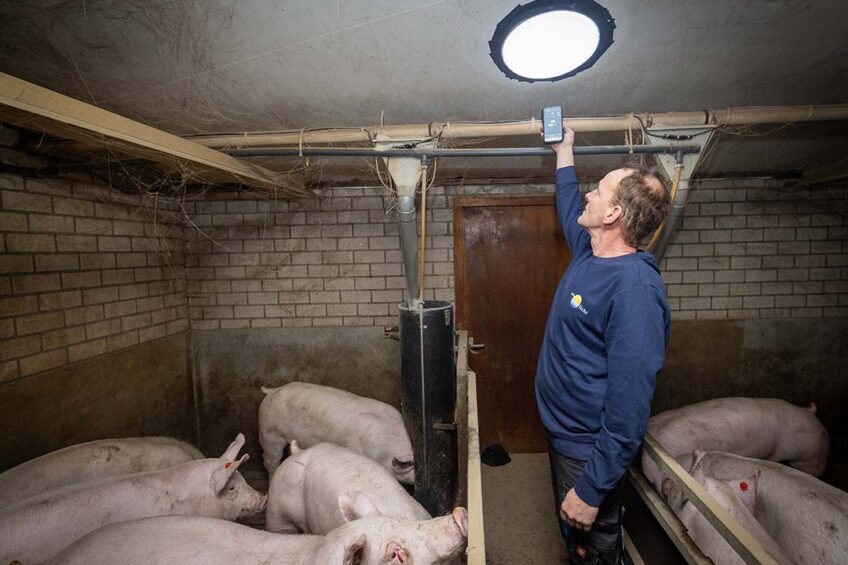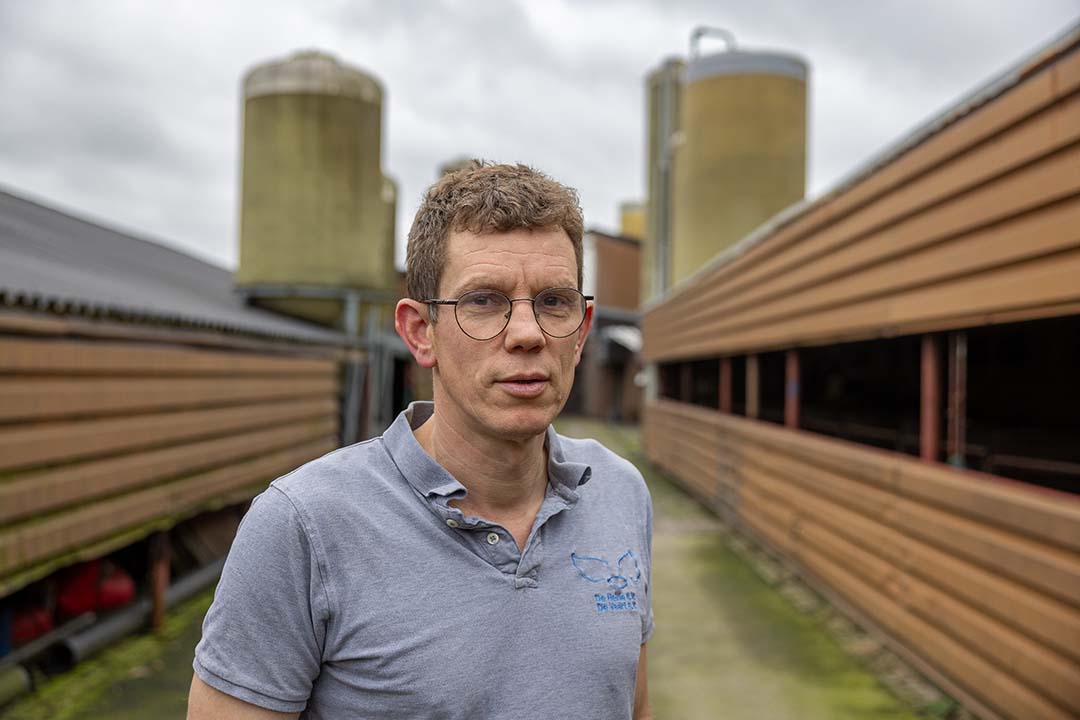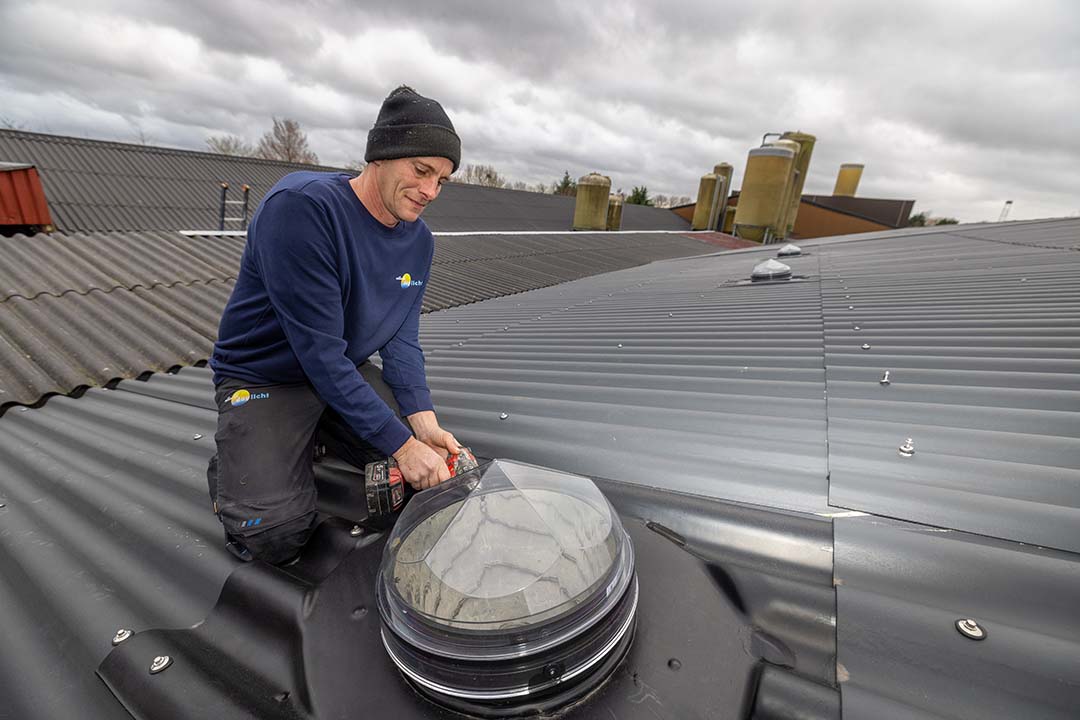Farm visit: daylight entering pig house through shafts

To continue producing for an animal welfare label, Dutch pig producer Wim Hendrickx had to make sure daylight would reach the pigs in the pig house. His solution was to apply roof lighting through special shafts.
On the corrugated iron roof, Dennis de Vries is working on the finishing touch of a “daylight shaft.” This is the first set of shafts to be installed here; an additional 27 shafts are ready to be installed soon. With De Vries’ company Natuurlijk Daglicht (Natural Daylight), pig houses are increasingly being provided with daylight. Not via windows or translucent sheets, but through reflective shafts running through the roof.

Better Life
For Hendrickx, the installation of shafts is important to get sufficient natural daylight to a number of areas with piglets and finisher pigs. Within the animal welfare scheme called Beter Leven (Better Life), sufficient amounts of daylight will be mandatory as from 2025.
Hendrickx’ intention is to continue producing for the concept. “In some of the houses there was no daylight coming in at all, in others there was too little to meet the standard.” In case he would have opted for retrofitting windows, these would have to measure 2% of the total floor area. With daylight shafts, however, a surface of just 0.5% of the floor area is needed. In addition, making windows in the side walls would have required an intervention in the pig house’s construction. That, in turn, would have required calculations, as it would have affected the walls’ load-bearing capacity.

Translucent sheets
Installing translucent sheets would also have been an option, but due to the presence of ventilation ceilings and an exhaust duct, it would only have been possible in a limited amount of places. As a result, he expects the result to be not light enough, especially in front of building. “Under a translucent plate there is a lot of heat radiation. With a light shaft this is not the case.”
Ample light inside
Via a detour, Hendrickx got in touch with Natuurlijk Daglicht. He says, “My neighbour had won a shaft at a trade show in nearby Den Bosch. The concept immediately appealed to me.” He was already familiar with the principle; as in his home, daylight enters the bathroom via a shaft construction. Technically they may not be quite the same, but the principle does correspond to the application in the pig houses.
So the farm will get daylight shafts with diameters of 35 and 53 cm, depending on the amount of light that is needed. These are 4 m long in some departments. De Vries says, “If necessary, the light can travel up to 38 m through the highly reflective shafts, and bends are not a problem.” Some losses do occur, but that would be both minimal and calculable.

Positive experiences with the light shafts
The first experiences after 6 months of working with 2 light shafts have been positive; the bundled light distributes nicely and even in winter – when daylight is relatively short – there is still quite a lot of light coming in. In summer, when there is substantially more daylight, values of 3,000 lux at 40 cm distance can easily be possible, De Vries says.
Natuurlijk Daglicht also offers a variety including LED lighting, with which they won a public award in 2023. With that option, artificial light falls into the pig area in a similar way to daylight. That option also eliminates the need for other lighting. Because Hendrickx’ departments also have fine artificial light, this more advanced system offered little additional benefit.
Uncertain about reimbursement
A light shaft at Hendrickx’ farm costs about € 500 each, including assembly, other materials and (own) labour. At other farms the costs may be higher or lower, depending on the type of roof, the method of assembly and the distance along which the light must be moved. In total, Hendrickx will spend about € 15,000 to meet the daylight requirement.
Whether the additional costs will be reimbursed is uncertain, but the entrepreneur feels it is important to continue participating in the welfare scheme. He expects a positive market with continued demand for this type of pigs because some of his colleagues are likely to drop out. He adds, “Set aside from the Beter Leven welfare scheme, I do not rule out the possibility that daylight will become mandatory at some point. In that case, these houses already meet the requirements.”

Little maintenance
In terms of maintenance, the daylight tube, just like a window, needs to be cleaned with a cloth from time to time. For the construction on the roof, this is usually not necessary because the rain washes it clean by itself. Therefore, checking for any contamination once every few years should be sufficient.
Obviously, at this stage Hendrickx does not yet know how long the light shafts will last. The oldest ones are now about 8 years old and, according to the supplier, are still working fine. The shafts come with a ten-year warranty. There is 20 years of experience from applications in homes and industry. A pig house may not be an optimal environment, but Hendrickx expects the system to be air tight and ammonia proof.








